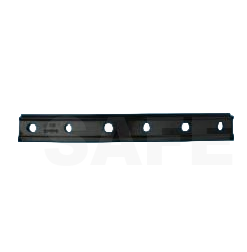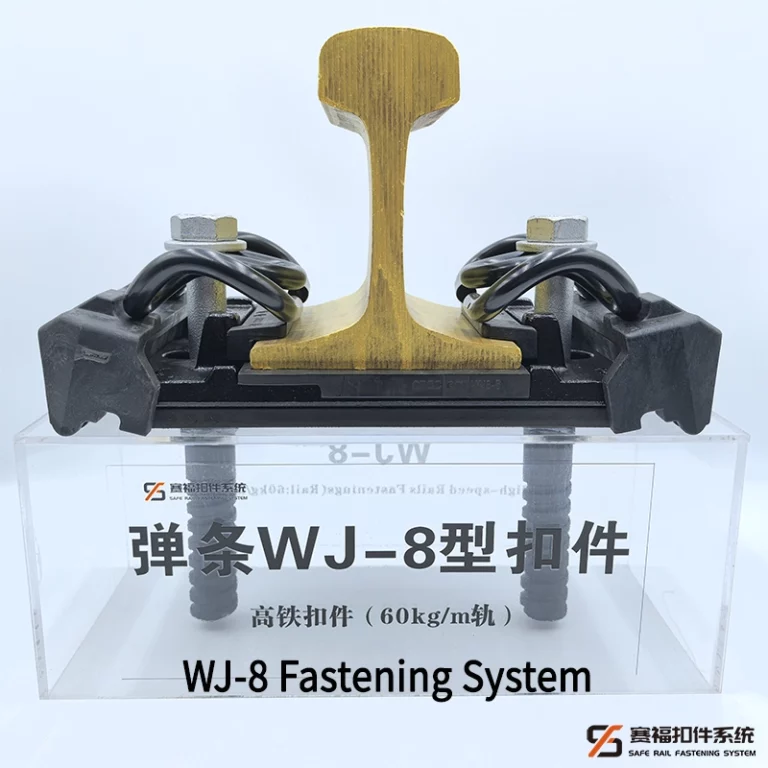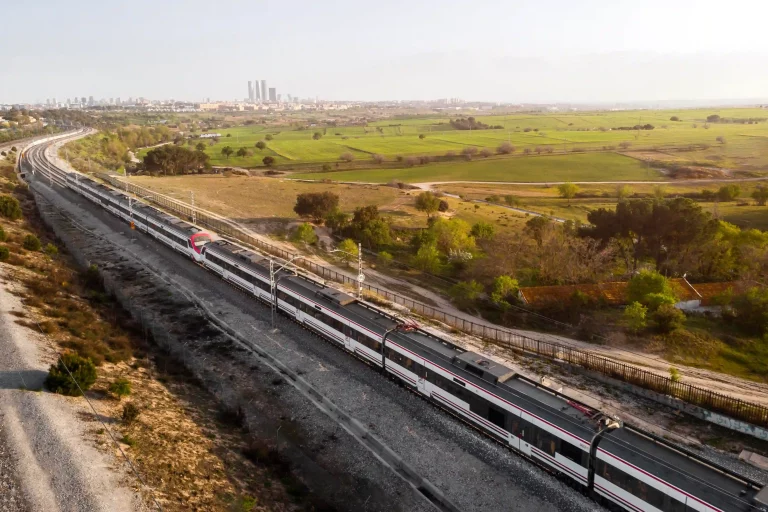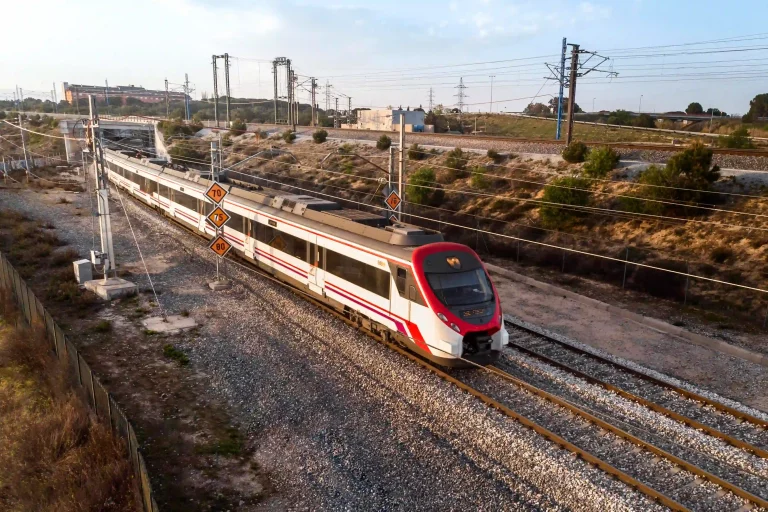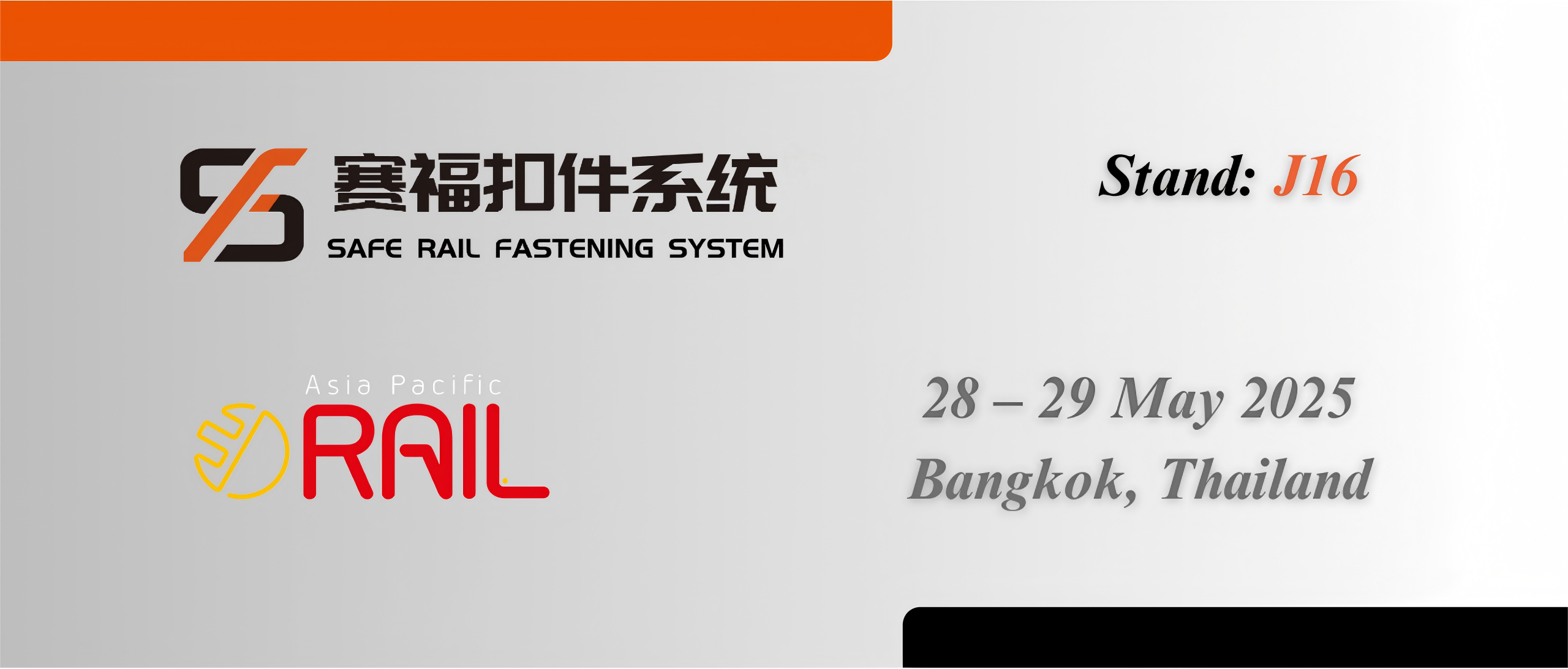Understanding Fish Plates
What is a Fish Plate?
A fish plate, also referred to as a splice bar, is a crucial component in the railway industry tasked with joining two rail ends together. It is typically a flat, elongated piece of steel with bolt holes designed to fit onto the rail’s web, aligning and securing adjacent sections. Manufactured for durability and robustness, fish plates are vital to maintaining the structural integrity of railway tracks. By ensuring seamless connections, these devices help to safeguard the rails against potential misalignments, thus facilitating a smoother and more stable ride for trains.
Types of Fish Plates
Several types of fish plates are employed in railway installations to address various needs and rail types. Common variations include standard fish plates, which are used for general applications. Compromise fish plates are designed to join rails of different sizes or profiles and are essential for transitional sections of a track. Insulated fish plates, on the other hand, prevent electrical currents from passing between joined rail ends, playing a pivotal role in track signaling and control systems. Lastly, the specialized fish plates are used in heavy-duty railways to withstand high loads and extreme conditions, thereby enhancing the longevity and reliability of the rail infrastructure.
Installation Process
The installation process of fish plates is meticulous and must adhere to stringent standards to ensure safety and efficacy. To begin, the rail ends must be properly aligned and cleaned to remove any debris or rust that could impede a secure fit. Once the surfaces are prepared, the fish plate is placed on the web of the rail, aligning its bolt holes with those pre-drilled in the rail ends. Bolts are then inserted and tightened to the specified torque, ensuring the plates are firmly secured. Regular inspections and maintenance checks are recommended to ensure the conditions of both the fish plates and bolts are intact, thus preventing any rail track discontinuities or failures.
Benefits of Using Fish Plates
The use of fish plates in railway tracks comes with numerous benefits. One of the primary advantages is the enhanced structural integrity they provide, ensuring that rail connections are secure and stable. This stability significantly reduces the chances of derailments caused by track misalignments. Additionally, fish plates facilitate the quick implementation and repair of rail joints, minimizing downtime and ensuring the continuous operation of rail services. The versatility of fish plates also allows for their use in different track sections and types, providing adaptability across various rail systems. Finally, they help in maintaining electrical insulation in key sections of the track, which is essential for the safe and effective operation of rail signaling systems.
The Role of Fish Bolts
What are Fish Bolts?
Fish bolts are specialized fasteners used to secure fish plates to rail sections. These bolts are designed to withstand dynamic stresses and vibrations, thus playing a critical role in ensuring the stability and security of rail joints. Made from high-grade steel or other durable materials, fish bolts are typically equipped with nuts and washers to hold the assembly tightly together. They are essential in maintaining the connection between rail ends, which helps in distributing the stress uniformly along the joint and preventing premature wear or failure of the rails.
Types of Fish Bolts
Various types of fish bolts are used in rail construction, each catering to specific needs and applications. Standard fish bolts are the most common and are used in conjunction with traditional fish plates for general track maintenance and construction. High-tensile fish bolts, made from superior materials like alloy steel, are utilized in heavy-duty or high-speed railways for their strength and resistance to shear forces. Insulated fish bolts, often used in combination with insulated fish plates, ensure that electrical insulation is maintained at rail joints, which is crucial for signal integrity. Anti-theft fish bolts feature unique designs and locking mechanisms to prevent unauthorized removal, enhancing the security and integrity of the rail infrastructure.
Installation Process
The installation of fish bolts involves several detailed steps that require precision and care. Firstly, once the fish plate is positioned on the rail ends, fish bolts are inserted through the aligned holes in the fish plate and rail web. It’s crucial to ensure that the bolts used are appropriately sized to match the holes and the combined thickness of the rail and fish plate. Next, washers are placed on the bolt ends, and nuts are threaded onto them. These nuts need to be tightened using a torque wrench to the specified tension to guarantee a secure fit. Tightening should be uniform to distribute pressure evenly across the rail and plate interface, preventing any distortions and ensuring a robust connection. Regular torque checks and bolt inspections are necessary to maintain optimal performance and safety standards.
Benefits of Using Fish Bolts
Using fish bolts offers significant benefits for railway infrastructure. Firstly, their ability to firmly secure fish plates to rail sections ensures that rail joints maintain structural integrity under dynamic loads and varying environmental conditions. This reduces the risk of separation or misalignment, which can lead to derailments or other rail accidents. Furthermore, high-tensile and anti-theft varieties of fish bolts provide added security and durability, making them suitable for high-speed railway lines and areas prone to tampering. Additionally, fish bolts contribute to ease of maintenance as they can be efficiently removed and replaced during track repairs or upgrades. This modular aspect facilitates quick track maintenance, enhancing the overall operational efficiency of railway networks.
Integration of Fish Plates and Fish Bolts
Compatibility and Coordination
The successful integration of fish plates and fish bolts is vital for achieving optimal rail joint performance. Compatibility between the fish plate holes and the dimensions of fish bolts is essential to ensure a precise fit. Both components are designed to work together to distribute stresses and resist lateral and vertical forces experienced by passing trains. The materials used in fish plates and fish bolts should also be compatible to prevent galvanic corrosion, which can occur when different metals come into contact. Effective coordination between these elements ensures a continuous and stable rail surface, preventing disruptions and prolonging the lifespan of the rail tracks.
Common Applications in Rail Infrastructure
Fish plates and fish bolts are extensively used in various applications within rail infrastructure. They are commonly found in regular track sections where maintaining alignment and continuity is critical. In addition, they are used at track junctions, switches, and crossings where transitions between rail sections must be smooth and secure. High-stress areas such as curves and gradients also benefit from the robust connections provided by fish plates and bolts, which help in distributing the additional forces encountered. Furthermore, in areas requiring electrical insulation, insulated fish plates and bolts are employed to maintain signal integrity and ensure safe railway operations. This widespread usage underlines their indispensable role in maintaining efficient and reliable rail networks.
SAFE‘s bolts are the silent guardians of the rails, ensuring that every fish plate does its job without floundering. So, the next time you’re pondering the existential importance of fish plates, remember that SAFE is out there, tightening bolts and securing tracks, all while probably humming a sea shanty under their breath. Because in the rail industry, it’s not just about the fish plate; it’s about the SAFE and sound fastening system holding it all together.
c
Conclusion: Importance in Rail Construction
Ensuring Safety and Reliability
The use of fish plates and fish bolts is paramount in ensuring the safety and reliability of railway tracks. By providing strong and secure connections between rail sections, they reduce the risk of track misalignments and subsequent derailments. The robust integration of these components ensures that the rails can withstand dynamic loads and environmental stresses, contributing to the overall durability of the railway infrastructure. Moreover, their role in maintaining electrical insulation is critical for the safe operation of rail signaling systems, further enhancing rail safety.
Future Trends in Rail Fastening Systems
As railway technology evolves, advancements in fish plates and fish bolts are expected to emerge, focusing on improving their performance and durability. Innovations in materials science may lead to the development of even stronger and more corrosion-resistant components. Additionally, smart fastening systems with sensors that monitor the condition of rail joints in real-time could become commonplace, allowing for proactive maintenance and reducing the risk of sudden failures. These future trends aim to enhance the longevity and reliability of rail fastening systems, ensuring that rail transport remains a safe and efficient mode of transportation for years to come.



